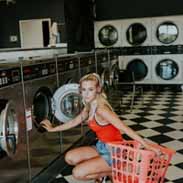Aseptic Technique Flashcards, test questions and answers
Discover flashcards, test exam answers, and assignments to help you learn more about Aseptic Technique and other subjects. Don’t miss the chance to use them for more effective college education. Use our database of questions and answers on Aseptic Technique and get quick solutions for your test.
What is Aseptic Technique?
Aseptic technique is a set of medical practices and procedures that help to reduce the risk of contamination by microorganisms, such as bacteria, fungi, and viruses. It generally involves sterile equipment and supplies, hand washing with an antiseptic solution, and wearing protective clothing. Aseptic technique is used in many medical settings including surgery rooms, intensive care units, laboratories, and even in basic wound care.The main purpose of aseptic technique is to help prevent the transmission of infectious organisms from one person or area to another. This helps protect patients from developing serious infections that could potentially be life-threatening or cause long-term complications. Aseptic technique also helps to protect healthcare professionals from being exposed to pathogens that may cause serious illnesses such as hepatitis B or C virus infections.The first step in a successful aseptic technique is proper hand hygiene with an antimicrobial soap or alcohol-based solution before any contact with the patient or their environment. Healthcare professionals must also wear clean gloves when performing any procedure on a patient or handling equipment and supplies related to patient care. All surfaces must be thoroughly cleaned prior to use in order to minimize the chance for contamination. When preparing medications for administration, it is important that they are done away from other activities in order to reduce airborne contaminants which could introduce germs into the medication itself. Also all needles should be discarded immediately after use instead of being reused as this increases the chance for infection transmission between patients through contaminated needles if not properly disposed of correctly each time they are used on different individuals In conclusion, aseptic technique is an important part of providing safe medical care by helping reduce the spread of infection among patients and healthcare providers alike.











